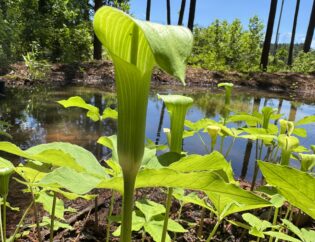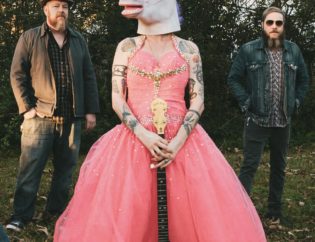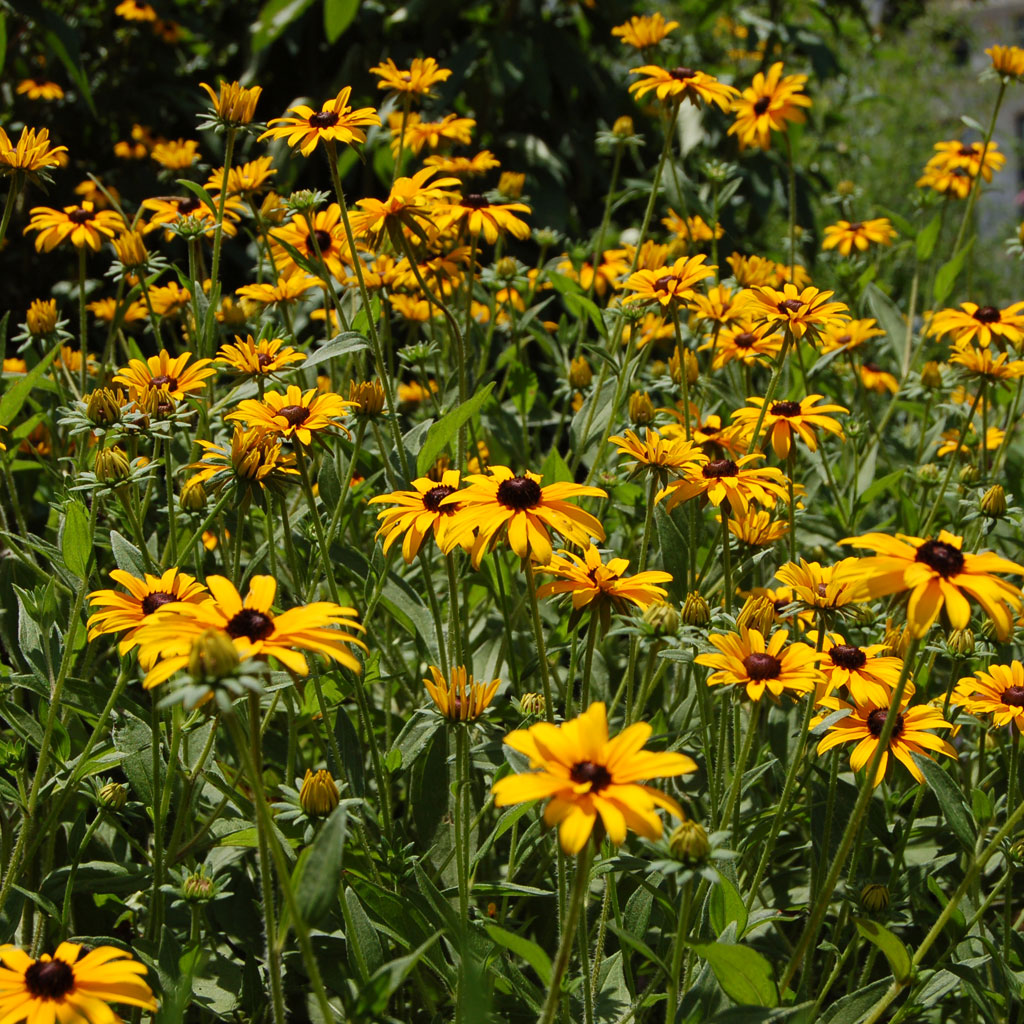
A short list cannot begin to describe the immense diversity and variation in the plant species and communities that evolved in what is now Georgia, USA. This list is just an attempt to get you to think about the plants that are in your yard and garden, where they came from, and what purpose(s) they serve. Landscaping can be beautiful AND provide food and shelter for wildlife.
In selecting these plants my criteria included: Native to Georgia, Number of caterpillar species hosted, Production of fruits/nuts for birds (and humans), Abundant flowers for pollinators (and humans), and cover/shelter for birds. The number of caterpillar species hosted is doubly important: Some lucky caterpillars get to grow up to be butterflies and moths that help pollinate flowers, but the vast majority of them are destined to be eaten by birds and other animals. Baby birds need large amounts of fat and protein to develop their brains and bodies just like baby humans, but unlike humans, birds cannot deliver these nutrients via milk. It takes lots and lots of caterpillars to raise a healthy bird to maturity. Each selection starts with a whole Genus of plants, and then narrows to one or two species that are endemic to the Piedmont. There are two reasons for this structure: The numbers for caterpillar species hosted* are expressed by genus, and if conditions in your yard will not support my selections then you can research the other members of the genus. The wide diversity of plants in the Southeast almost guarantees that there are other species in the genus that will find your yard delightful. Mindful selection of native plants for your yard helps to reunite a fragmented landscape into a larger community, and gives us all a sense of place in the land that we call home.
*All numbers cited for caterpillar species hosted come from Dr. Douglas Tallamy’s invaluable research that can be found on his website at http://www.bringingnaturehome.net/
Wild Cherry – Prunus spp. 
Wild Cherry, Chokecherry, Wild Plum, Black Cherry and Laurel Cherry are some of the common names given to the native members of this genus. It also includes the cultivars that give us our plums, cherries, almonds, apricots, and peaches. The native Prunus species host a whopping 429 different species of caterpillars! In addition to the caterpillar smorgasbord, the fruits are also an important food source for birds. Chickasaw Plum (Prunus angustifolia) is a small tree (15 to 25 feet at maturity) that has glossy dark green leaves and reddish-brown bark. Clusters of small white flowers bloom in early spring, which provides much-needed nectar for emerging native bees. The small ½” reddish-orange fruits ripen in the late summer. The fruits are usually a bit tart to our modern tastes, but have a long history as a food source for Native Americans, and were later used to make jams, jellies, and wine by colonists. If you have the space Black Cherry (Prunus serotina) is a full size tree (up to 100 feet) with the same early blooming white flowers. The fruits are small, but abundant, and also have a long history of use in jams and pies, and as a flavoring in many foods and beverages.
Blueberry – Vaccinium spp.
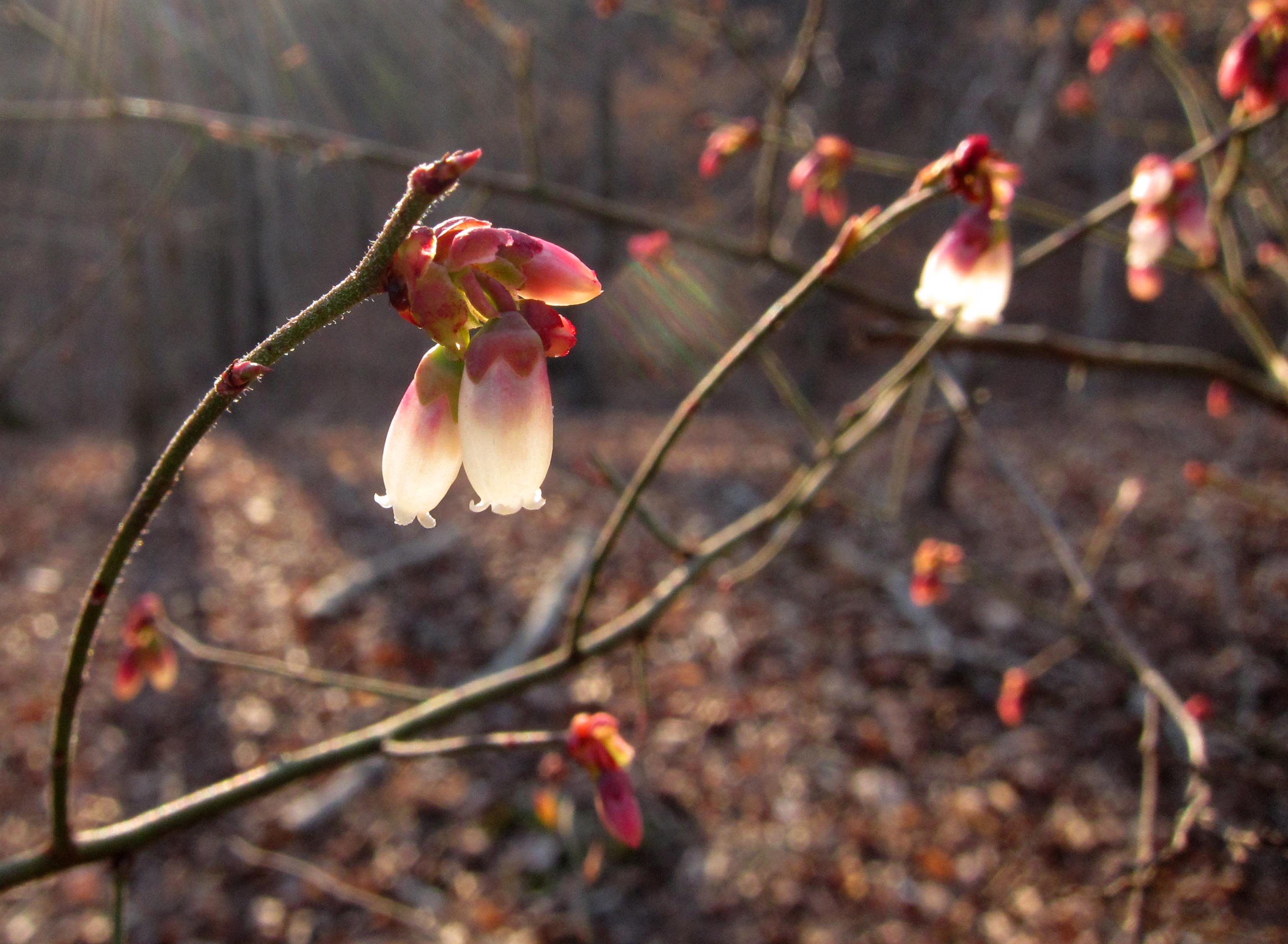
Blueberries should be very familiar to anyone that has spent even a single summer in Georgia. The Vaccinium genus also contains the species commonly known as: Bilberry, Huckleberry, Cranberry, Whortleberry, and Lignonberry. Its members host 286 species of caterpillar in addition to making those delicious berries. The creamy white bell-shaped flowers bloom early in the season providing nectar for bees, and have their own native specialist pollinator, the Southeastern Blueberry Bee, that utilizes “buzz pollination” to efficiently transfer pollen and increase berry production. The Southern ‘Rabbiteye’ Blueberry (Vaccinium virgatum or V. ashei) has numerous named cultivars selected to produce tasty berries if you can beat the birds. It does better in the Southeastern climate than the Highbush Blueberry (Vaccinium corymbosum), which is a more northerly native, and also has numerous named cultivars. Cultivars are all essentially clones, so make sure to plant at least two different ones for good cross pollination and berry set. If you want a true native try the amusingly named Farkleberry (Vaccinium arborescens), for a large shrub with evergreen leaves and smaller, tart berries that birds will still readily eat.
Joe Pye Weed – Eutrochium/Eupatorium spp.**
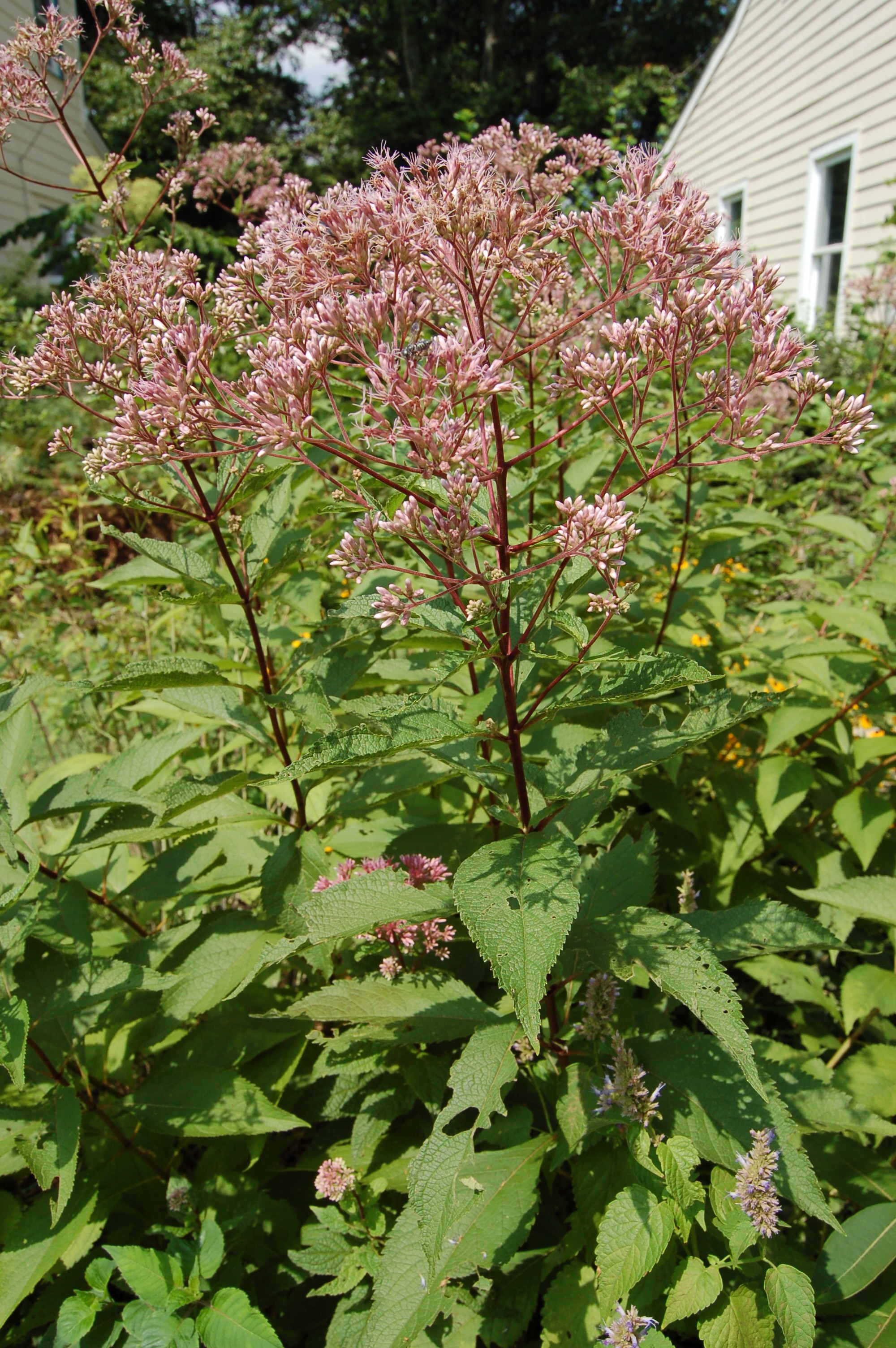
Joe Pye Weed (Eutrochium fistulosum) is already a popular garden plant, especially with butterfly enthusiasts. It grows up to ten feet tall in ideal conditions (part shade, moist soils) and produces large rounded clusters of hundreds of tiny pink flowers. Every shape and size of pollinator will be on this plant at the height of its bloom in late summer. Another member of this genus that also attracts numerous and diverse pollinators is Boneset (Eupatorium perfoliatum). It has a long history of medicinal use by Native Americans and later by colonists. Boneset is easily recognized by its large, fuzzy perfoliate leaves. The opposite pairs are joined at the bases, and the stem appears to perforate them. Rounded clusters of white to pinkish blooms top the stalks in late summer. Eupatorium hosts 40 species of caterpillars, provide abundant nectar for adult butterflies, and follow through with lots of seeds for songbirds.
**Thanks to DNA sequencing all of the plants that used to be in the Eupatorium genus are constantly being shuffled around a few genera, so I am treating these two interchangeably.
Sedges – Carex spp.
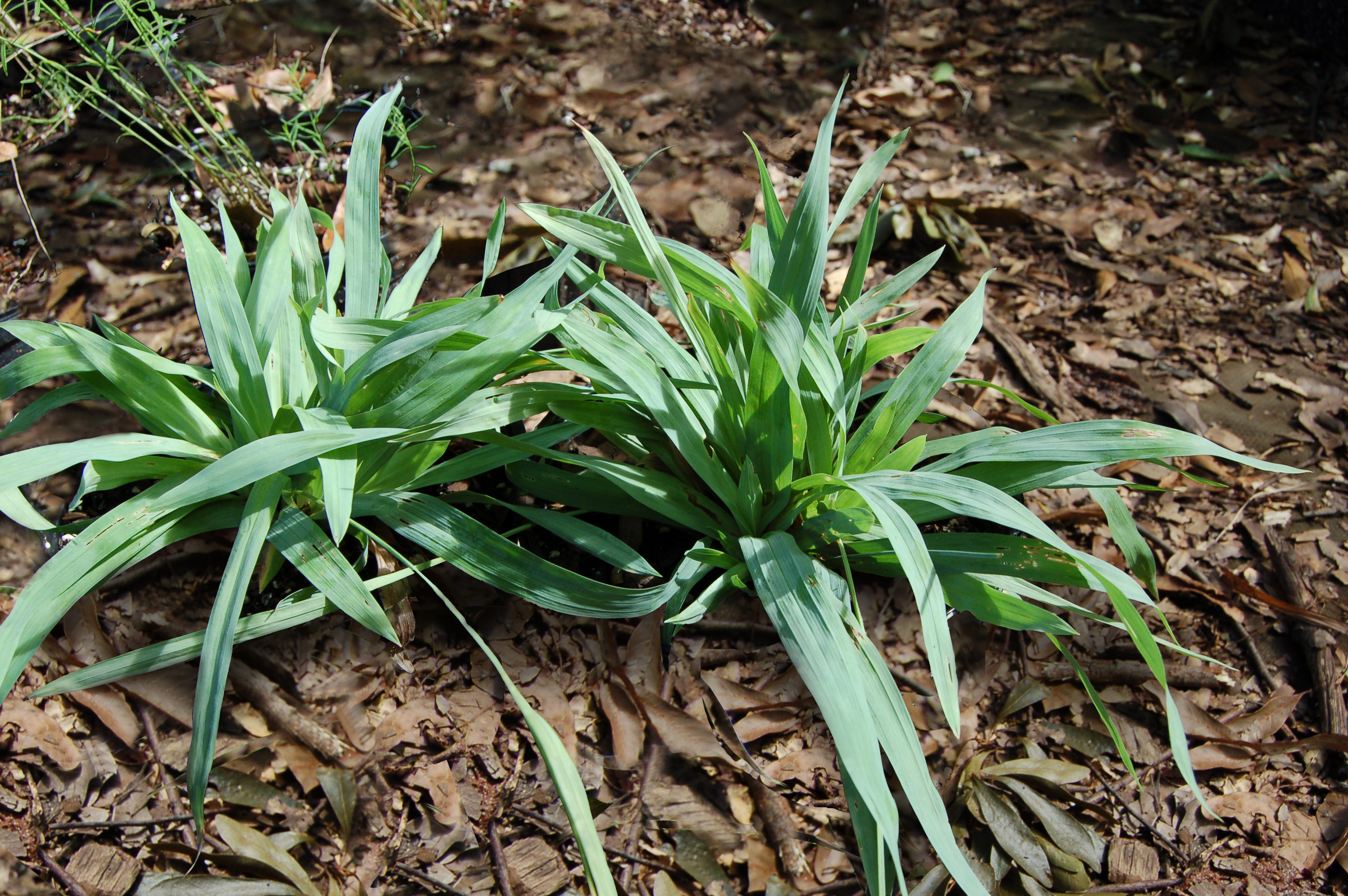
Sedges are very similar to grasses, and are in fact close cousins of the grass family. They tend to be shorter at maturity, have broader leaves, and prefer partly shady moist areas, whereas grasses tend to prefer drier, sunnier habitats. Sedges are very well suited for border plantings at the edges of walkways, flower beds, and around the bases of trees. Anywhere that one might consider planting the dreaded invasive Monkeygrass (Liriope spp.) is a spot that would be much better off with a group of sedges. Broadleaf Sedge (Carex platyphylla) has attractive silvery green leaves that form dense clumps 8-10” tall and put up spiky flower heads that develop into seeds for songbirds. Blue Wood Sedge (Carex flaccosperma) has blue-green leaves, is semi-evergreen, and blooms in early spring. Carex hosts 36 caterpillar species in stark contrast to Liriope’s zero.
(NATIVE) Honeysuckle – Lonicera spp.
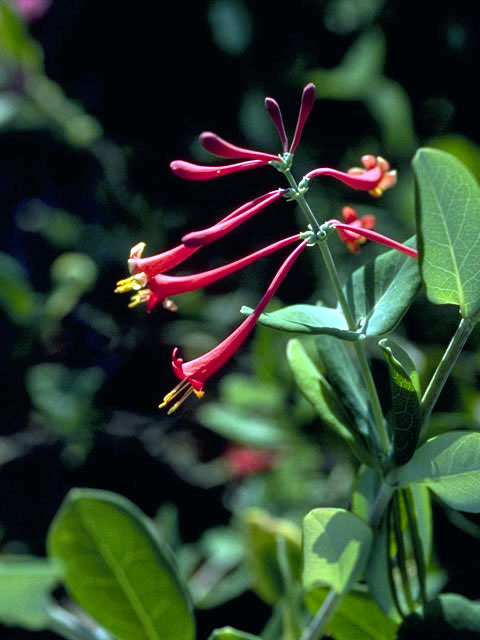
The sweet smelling and tasting Honeysuckle with the creamy white flowers that is most often associated with that word is actually highly invasive and originally native to Asia. Lonicera japonica was spread all over the world in the 19th century and is now on every continent except Antarctica. Please do not propagate this plant, despite the fact that many nurseries continue to sell it. Scarlet Honeysuckle (Lonicera sempervirens) is native to this country, and is a tree-safe vine that produces clusters of brilliant red tubular flowers in mid-spring. These flowers are an important nectar source for our resident and migratory hummingbirds. The foliage is semi-evergreen, and the plant roots easily at the nodes making it easy to grow and multiply. It can be trained onto a trellis or fence into a very attractive, cascading mass of dark green leaves and bright red blooms. Yellow Honeysuckle (Lonicera flava) is another US Native that is essentially the same as Scarlet Honeysuckle in all respects except flower color. Its yellow tubular flowers are also attractive to hummingbirds. The native Lonicera plants host 33 species of caterpillars.
Goldenrod – Solidago spp.

Goldenrod often gets a bad reputation by association. It blooms the same time as Ragweed, and frequently gets blamed by allergy sufferers as the cause of their congestion. Goldenrods are pollinated by insects, and as such do not release clouds of pollen into the air like Ragweed. The beautiful yellow flowers are a favorite of many pollinators when they bloom in late summer as most other flowers have faded. In addition to beautiful, nectar bearing flowers goldenrods host 112 species of caterpillars. Showy Goldenrod (Solidago erecta) is a low-growing set of leaves for most of the year until it sprouts a 3-4 foot tall stem in late summer that is covered in hundreds of tiny yellow flowers. The small seeds that follow the blooms are readily consumed by birds. Wrinkleleaf Goldenrod (Solidago rugosa) is a slowly spreading, rhizomatous, colony-forming plant that has deep green leaves with toothed margins. The low-growing rosettes of leaves put up stalks lined with small yellow flowers in late summer that are followed by abundant seeds.
Hawthorn – Crataegus spp.
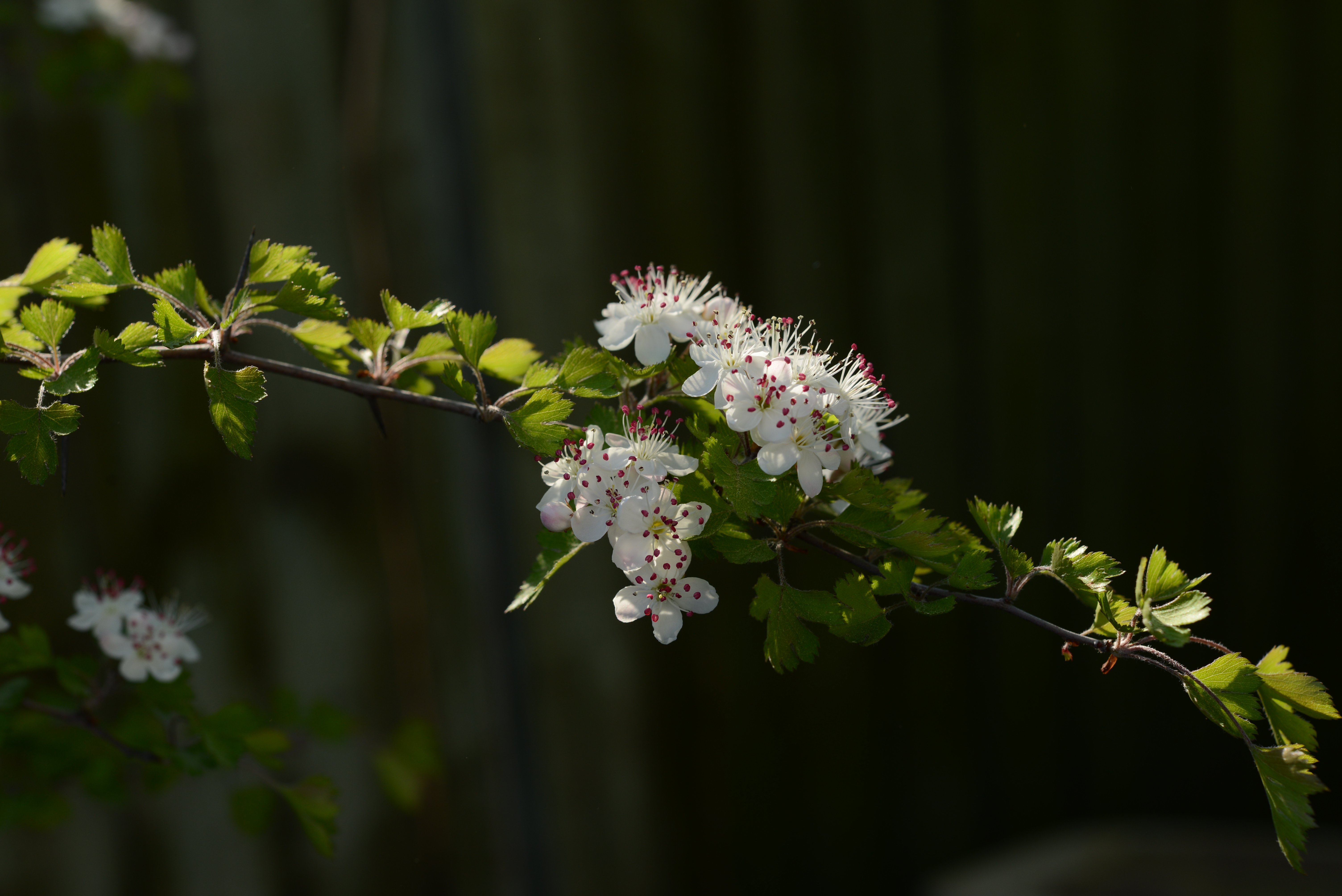
Hawthorns are large, thicket forming, woody shrubs in the Rose family. As with roses, they have beautiful flowers and large thorns. A thorny hedge is a great way to deter a nosy neighbor, and it makes ideal cover for nesting birds. Hawthorns flower in early spring, which makes them another important nectar and pollen source for native bees, they produce edible fruits, and host an impressive 150 different species of caterpillars. Yellow Hawthorn (Crataegus flava) is a drought tolerant small tree/ large shrub with clusters of bright white flowers in early Spring, yellow fruits in Summer, and beautiful foliage in Autumn. Parsley Leaf Hawthorn (Crataegus marshalii) is a multi-stemmed upright shrub with small, deeply incised leaves that resemble parsley leaves. Small white flowers are followed by bright red fruits that persist on the plant to become winter bird forage. It does well in average to dry soils and part shade.
Arrowwood – Viburnum spp.
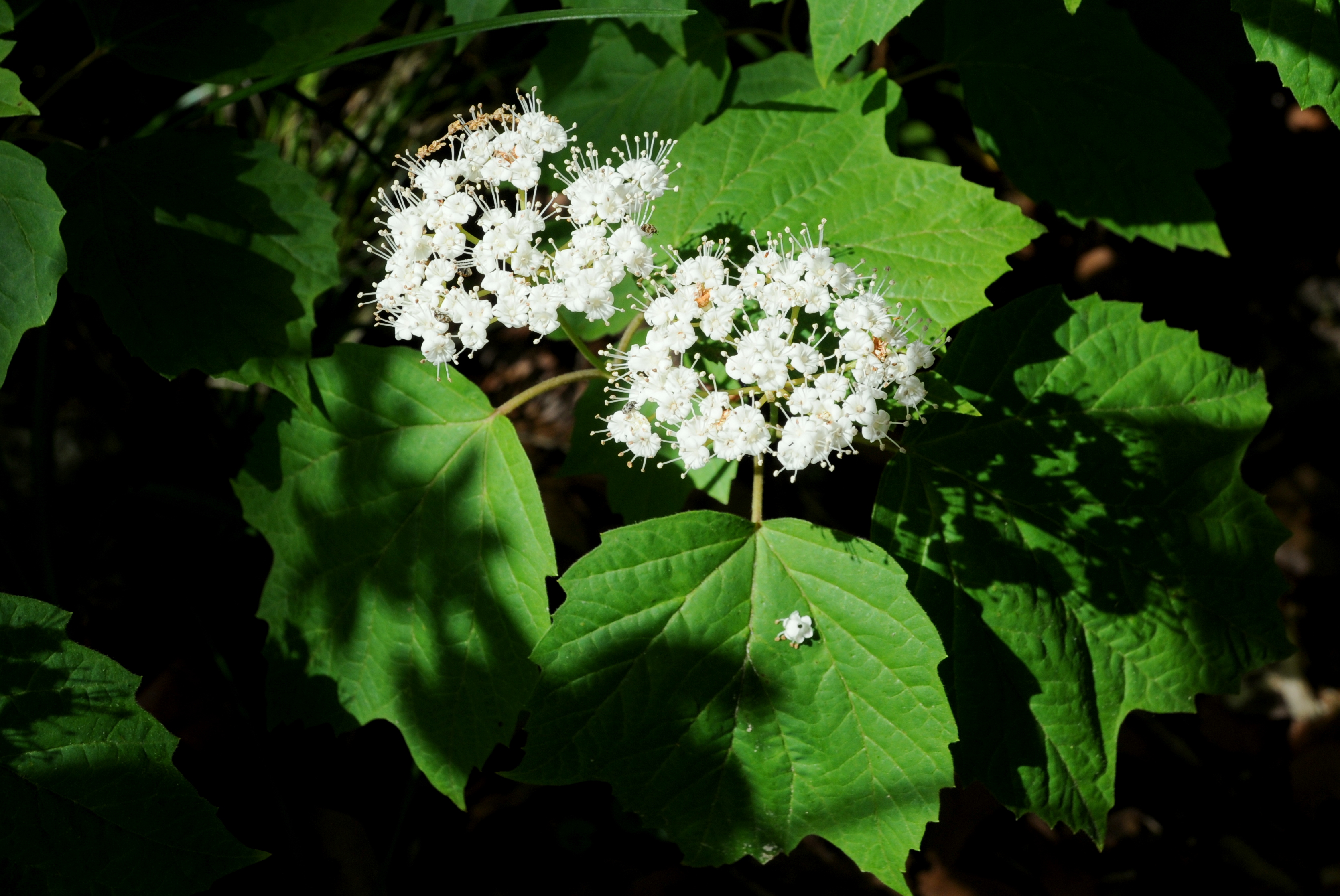
Viburnums are very popular with landscapers and developers. Low water needs, tolerant of many soils, attractive glossy foliage, beautiful flowers, autumn colors: They knock it out of the park. Unfortunately, many of the varieties that are in the nursery trade are either from Asia, or have been hybridized with Asian species. This has made for some very interesting looking cultivars, but there is scant research on whether or not the 97 species of caterpillars that feed on native Viburnum leaves can fully utilize these non-native plants. Best to err on the side of caution on behalf of the caterpillars and plant a native that will also produce viable seeds for the birds to spread around. Mapleleaf Viburnum (Viburnum acerfolium) is a great shrub to grow in the filtered shade of a large tree. It spouts multiple 3-5 foot tall stems lined with large opposite pairs of deep green leaves that are easily mistaken for Maple leaves. Rounded clusters of small white flowers bloom through the spring, and are followed by pea-sized blue-black fruits that birds will devour just as quickly as blueberries. The leaves put on a spectacular color show in autumn shifting through yellow, orange, red and then purplish hues before they drop for the winter. A larger specimen is Rusty Blackhaw (Viburnum rufidulum) which is a thicket forming large shrub/small tree that grows 10-20 feet tall. The young leaves are covered in fine red hairs that give them a “rusty” appearance, and they also turn brilliant colors in the fall. It does best in average to dry soils and full sun to part shade.
Asters – Symphyotrichium spp.

Asters are one of the largest plant families encompassing over 1600 genera of closely related plants with very similar looking flowers including Sunflowers, Daisies, Coneflower, Black Eyed Susan, and many, many more. The members of the Symphyotrichium genus tend to be named “(Person/Place/Adjective) Aster.” Georgia Aster (Symphyotrichium georgianum) should be our state flower. It is a drought tolerant rosette of low-growing leaves for most of the year, but starting in September a 3-4 foot tall branching stalk of blooms emerges. The abundant 2” flowers have deep purple petals with purplish-white centers that often continue to bloom through October into November making it a great source of late season nectar and pollen. Another late bloomer that is also inconspicuous until it flowers is Calico Aster (Symphyotrichium lateriflorum). Its 2-4 foot tall bloom stalk is covered with hundreds of small white flowers with yellow centers that fade to brown as they age. The blooms continue to emerge through November or until they are killed back by frost.
Sunflowers – Helianthus spp.
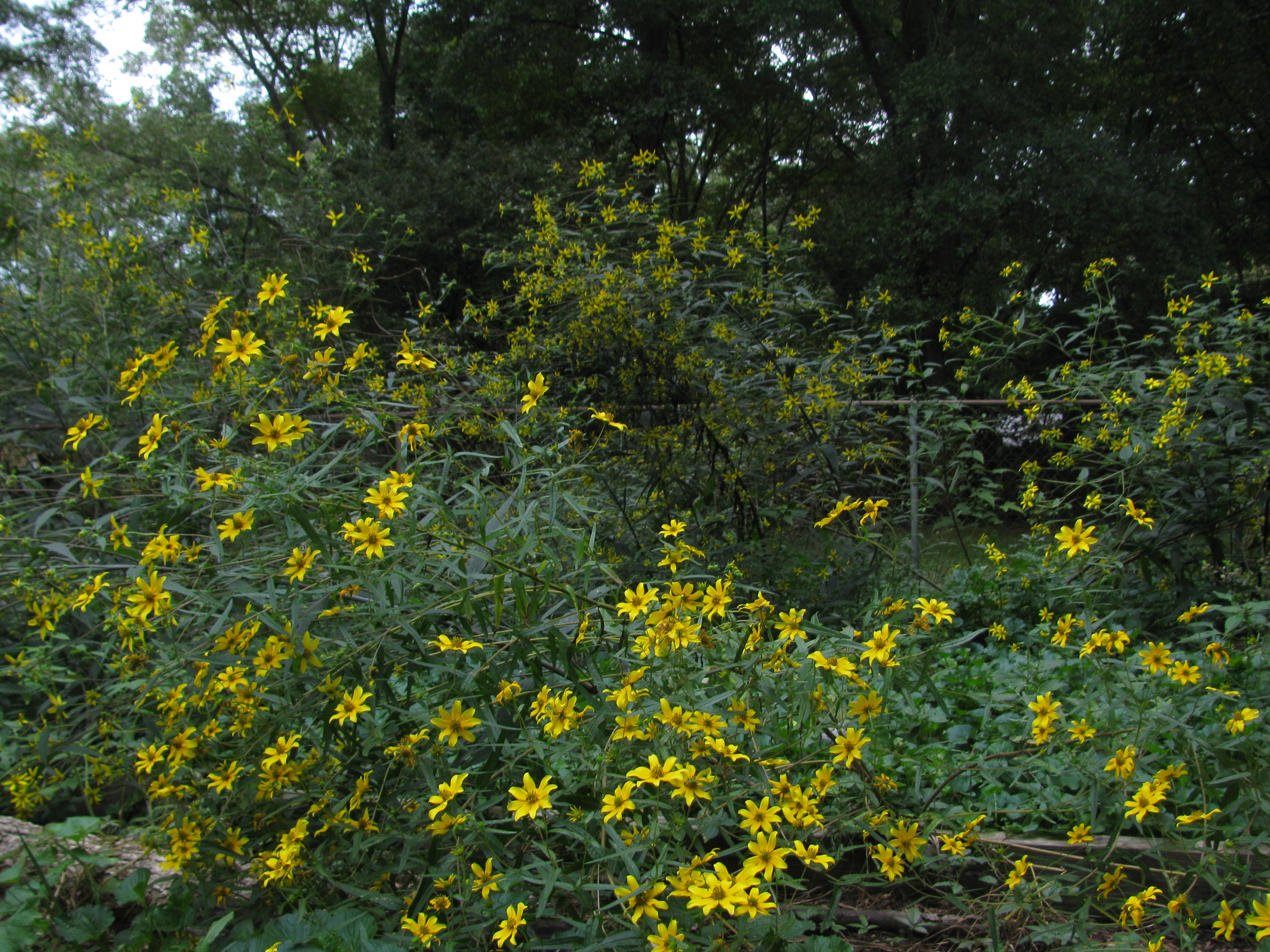
All Sunflowers are native to the North American continent and were one of the first food plants to be domesticated and cultivated by Native Americans more than 2000 years ago. Since then many, many varieties have been bred that produce large edible seeds in all manner of sizes and colors. The annual varieties are fun to grow, and provide plenty of nectar, pollen and seeds for wildlife. Most of the annuals need full sun, but there are a few perennial species that do better in part shade. Purple Disk Sunflower (Helianthus atrorubens) sprouts multiple 3-5 foot flower stalks from its low-growing crown in late summer. The numerous 3” blooms have the iconic yellow petals and dark centers surrounded by a ring of purplish-red ray flowers. A partly shady area along a fence line or at the edge of a tree canopy is a great spot for this perennial sunflower. Another highly versatile species is the Woodland Sunflower (Helianthus divaricatus). I have planted it in full sun and fairly deep shade with successful blooms at both sites. The 5-7 foot tall arching stalks need a fair amount of space, but the reward is dozens of 2-3” yellow flowers per stalk in late summer through early fall. The back fence line or a neglected corner of the yard could easily host a shade tolerant sunflower and the 73 species of caterpillar that depend upon them.
Planting season is just around the corner. Start making plans to increase the biodiversity and beauty in your neighborhood.





